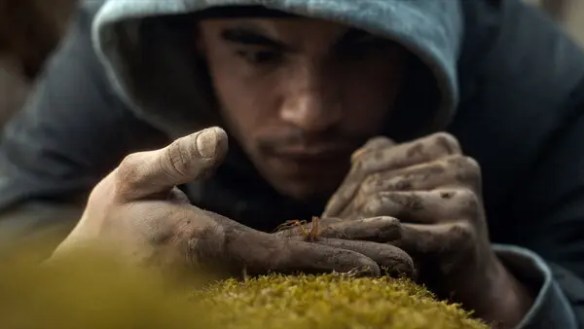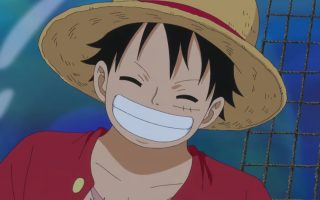Hello folks, and welcome back to Wrong Every Time. This week has seen my house munching through Hades 2, which I am sorry to report we are frankly not enjoying. Compared to the satisfying weapons and copious synergies of its predecessor, Hades 2 just feels immensely clumsy; its magic system doesn’t seem compatible with its combat design, and most of the time it feels like I’m choosing between upgrade options that are all varying degrees of convoluted and disappointing. When you combine that with the game’s limited movement options and serious problems with visual clarity, it adds up to an experience where I rarely feel in control of the outcome; it feels like aggravating work, to be honest, and I doubt I’ll be playing through the narrative’s conclusion. But hey, that just leaves more time for movies, so let’s see what the week had on offer!
First up this week was Infested, a recent French horror film starring Théo Christine as Kaleb, a young man living in a close-knit housing complex who one day purchases a mysterious spider for his home collection. The creature swiftly escapes and reproduces at a calamitous rate, putting the complex’s residents at war with a venomous and rapidly growing army. With the police instituting a lockdown, Kaleb and his friends will have to tread carefully to escape their cinderblock spider’s web.
Infested is a lean and highly effective feature, establishing its cast with a light touch, gracefully setting up the physical quirks of their decaying home, and then sending them through the worst fucking obstacle course of all time. I was quite impressed with how well the film made use of its fundamentals, really getting all the meat off the bone in terms of where you can take “spiders have taken over a housing complex.” It’s rare that “this movie would make a great videogame” is high praise, but it certainly works here – like Snowpiercer or The Warriors, Infested is a set of carefully designed levels, each with their own signature quirks.
It’s also quite fucking scary, really making the most of its terrible little beasties’ tendency to hide in any available shadows, and relying on clever camera placements by director Sébastien Vaniček to ensure the audience always feels even less safe than the characters. And though the focus here is largely on mechanical conflict, there’s still enough texture to make you feel for this cast of characters, who are all working in their own ways to make a home of an architectural prison. A promising debut by Vaniček in all regards.
We then checked out the 1977 adaptation of The Hobbit, produced by Rankin/Bass and animated by Topcraft, a Toei splinter studio that would also give us The Last Unicorn and Nausica, before ultimately being subsumed in the formation of Studio Ghibli. Orson Bean leads an assembly of Hollywood regulars as Bilbo Baggins, commissioned by a wizard to help some dwarves with some manner of thieving or other such nonsense.
First off, if you haven’t read The Hobbit, do so – it’s a quick, breezy, delightful journey. That said, this adaptation is also a fairly charming romp, its adaptation and consolidation of the book’s story harsh yet fair, crucially maintaining the whimsically, frankly sassy sense of Gandalfian humor that finds far less outlet in The Lord of the Rings proper. The animation is distinctive and the characters well-cast, though I was disappointed by the music, which is both bad on its face and exceedingly ill-fitting at basically all times. I’m not expecting America to write every Topcraft film’s theme song, but it probably wouldn’t hurt.
I then screened Heavy Metal, a quasi-cult classic of dubious repute that combines music from the likes of Black Sabbath and Sammy Hagar with visions straight from the world of wizard-painted vans and Mountain t-shirts, back when nerds dreaming of getting the girl was simply fodder for teen fantasies, not the binding principle of the new Nazi party. Loosely tied together through the device of a stone that embodies all evil, Heavy Metal ranges from neo-noir to farce to space fantasy, all lathered in a heavy coat of sex-centered juvenalia.
So yeah, as a veteran of ANN’s season preview guide, this one was basically par for the course for me. Most of the stories aren’t particularly good, ranging from actively obnoxious (the ones that try to be funny) to simply underwritten (the ones that try to convey a narrative). That said, there’s plenty of interesting animation throughout in a variety of styles, and a great deal of inventive background design work. I also found one of the stories genuinely endearing – “Den,” in which a nerdy American kid is warped into the body of a Conan-like strongman, but maintains his whiny internal voice throughout. That take on this overarching fantasy was crucially the only one with a sense of humor about its own sensibilities, admitting this was all a bit much while reveling in the honest joy of being a heroic adventurer for once. Not a film I’d recommend, but a worthy curiosity for animation completionists.
Last up for the week was Paperhouse, an ‘88 dark fantasy centered on Anna Madden (Charlotte Burke). After drawing a house at school on her eleventh birthday, Anna collapses and finds herself standing outside her creation, a lonely, lopsided edifice on an endless empty plane. Upon waking, she adds more additions to her drawing, including an ailing boy at the window named Marc. As Anna suffers a series of increasingly violent fever dreams, she will have to discover the connection between herself and this boy, and draw both of them an escape from their nightmares.
Paperhouse is an absolutely fascinating film, one of those features like The Last Unicorn or The Neverending Story that is absolutely overflowing with fantasy invention, and also so dark that it undoubtedly scarred a few unwary children. The house itself is the film’s most captivating invention, morphing and creaking throughout, serving as both playroom and prison when necessary. It feels like a convincing realization of the strange, sometimes unnerving ramblings of youth, an effect complimented by the film’s convincingly uncertain dialogue for its child leads.
Alongside the pure wonder of its dreamworld set design, Paperhouse is further elevated through its thoughtful illustration of Anna’s mental state, as well as how director Bernard Rose draws consistent visual and thematic parallels between Anna’s two worlds. Anna’s family relations are messy in ways that are too complicated for this film to resolve; her mother is fraying and ill-equipped to handle her strong-willed daughter, her father is a source of both fear and longing, and her world is a labyrinth of rooms that don’t feel like home, all captured through Rose’s alienating cinematography. It’s rare to find a film that is both this fully dedicated to surreal invention and also so utterly sturdy as a narrative; Paperhouse comes highly recommended.




